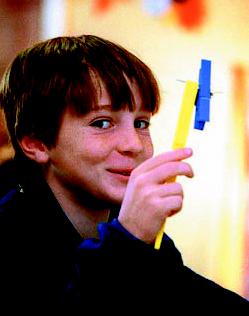| 2002 |

|
YEAR BOOK |
Forf�s � Science, Technology & Innovation Awareness Programme
|
Attitudes of primary and secondary students
to science, technology and innovation
|
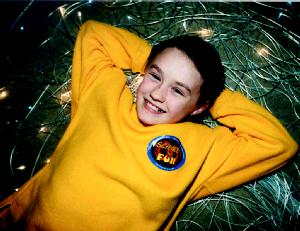
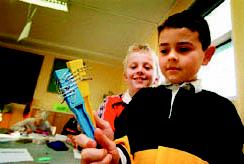
|
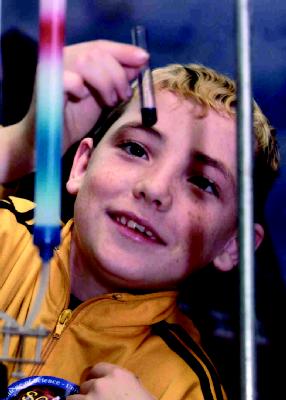
|
The attitudes of students at primary and secondary level to Science, Technology and Innovation are of great importance in view of the evidence throughout Europe of a declining number of students taking science subjects at school. In Ireland, the Task Force on the Physical Sciences, chaired by Dr Daniel O'Hare (see also Scientific Initiatives at the Department of Education & Science ), reported that in 2001 only 12% of Leaving Certificate students enrolled in Chemistry, while only 16% took Physics. It reported: 'It is critical that the demands of the labour market which supports the emerging technologies underpinning our economy are anticipated and strategically catered for'.
The Science, Technology and Innovation Awareness Programme, which is managed by Forf�s on behalf of the Office of Science and Technology, aims to promote greater awareness of STI at all levels in Irish society. The programme encompasses a variety of distinct activities aimed at various groups in the national community. These include the general public, decision makers, business, young people and the media.
As part of a wider evaluation of the STI Programme, regular surveys are undertaken of public attitudes to the subject. The most recent survey, carried out in November 2001, examined the attitudes and awareness of primary and secondary students to Science, Technology and Innovation.
The results of the survey, which are outlined below, are an interesting contribution to the debate currently taking place in many countries as to why fewer and fewer young Europeans are choosing scientific subjects. They reveal a loss of interest and enthusiasm in science as students move from primary to secondary school. There are, however, numerous pointers to how this problem can be tackled and overcome.
Different perceptions at primary and secondary level
Attitudes to Science and Technology differed considerably between primary and secondary students.
Primary students tended to be very positive in attitude, perceiving science as both interesting and exciting. They appear fascinated by anything that helps them to understand the world around them. 26% cited 'experiments' as the most interesting aspects of science, 20% 'wildlife/nature' and 15% 'computers/internet.' Very few appear to understand the term technology, only a minority associating it with electrical items such as televisions, etc.
Primary students tended to have a broader perception and interpretation of science than those in secondary, perceiving it to be about discovery and experimentation.
-
�They displayed an understanding of the diverse applications of science, associating it with nature and space.
-
�It appears to excite their imagination in a particular way through a perception of experiments and 'potions'.
-
An important factor encouraging primary students to engage in science is communicating the relevance of science to both real life and the world around them.
-
There is, however, a residue of outdated preconceptions of
science and scientists, with drawings of males in a white coat, or with glasses and wild hair.
-
Many secondary science students criticised the science curriculum for overemphasis on theory and the lack of time for experiments in a laboratory setting.
-
They do not see a connection with 'everyday living'.
-
�There is a perception that science teachers fail to relate theory to everyday life.
In general, both primary and secondary students failed to see an interconnection between science and technology. The two are seen to be separate. Technology is seen to be fast moving and dynamic, as opposed to scientific discoveries which are perceived to evolve over a longer time.
The comment of one 6th year illustrates this clearly: 'Technology moves faster than Science, it's all happening in the last 10 years, like the internet and stuff. The same kind of advances in Science would take hundreds of years'.
Why secondary students choose not to take science
-
�Lack of interest was cited by 40% as the reason for not taking either Physics or Chemistry.
-
Difficulty in obtaining Leaving Certificate points was cited as another reason. 32%
rejected Physics for this reason, and 34% rejected Chemistry.
-
35% rejected Chemistry and 36% did not take Physics as they found it difficult to understand.
-
Not seeing themselves ever working in a
science career was a further mitigating factor, cited by 27% for Physics and 28% for Chemistry.
-
Biology remains the most 'interesting' science subject,
perceived so by 55% of students.
-
Only 11% of female and 19% of male students perceive Physics to be 'interesting'.
-
Many students, however, feel they are not fully aware of the range of job opportunities available to them through science.
-
Fewer secondary students see science careers as well paid. Lawyers (93%), Doctors (90%) and Accountants (86%) feature higher than Scientists (74%) and Engineers (72%) and Science Teachers (36%).
Promotion of science and technology to students
-
68% of secondary and 69% of primary
students were aware of Science Week.
-
Despite this fact, only 18% of primary and 8% of secondary students said they participated in Science Week.
-
52% of primary students say they have never visited a science or technology exhibition.
-
81% emphasised the need for interactivity as central to their interest in science.
-
Almost seven in ten secondary school students (68%) and 80% of primary students would like to see companies visiting schools. Only half of secondary students said they had received any company visits.
Key influences
-
Parents and teachers are the key influencers on students' attitudes to science and scientific careers. 53% of primary and 34% of secondary students said they regularly discus topics about science at home.
-
Career Guidance Counsellors are key influencers in secondary schools. 64% of students said they would contact a guidance counsellor if they wanted to find out more about science.
-
�Both primary and secondary students felt that people working and studying science would be important sources of information about science.
-
The majority of secondary students had not received career guidance when choosing Leaving Certificate subjects. The Career Guidance Exhibition would be better held during Transition or even 5th year, to facilitate an impact on subject selection.
-
Secondary students who had sought career guidance counselling on scientific careers felt it had positively impacted on their decision to study science and technology for the Leaving Certificate.
-
Television remains a key medium by which young people learn about the application of science to everyday life. The Discovery and National Geographic channels were watched 'regularly' by 56% of primary and 46% of secondary students.
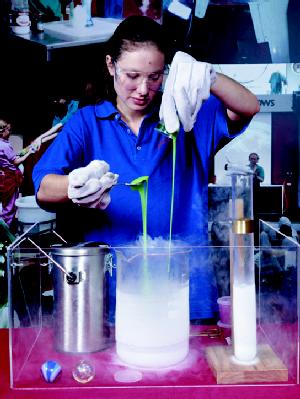
Contact: Stephanie O'Neill, Manager, STI Awareness Programme; Tel: 01-607-3082; E-mail: [email protected]; further information on the STI Awareness Programme is available at www.science.ie
